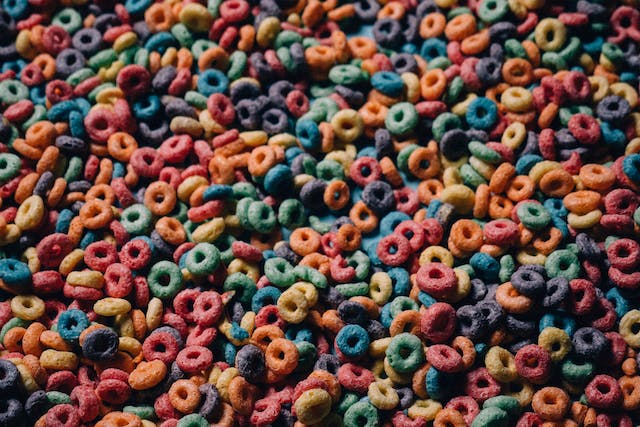
When did ultra processed food start? Technically, humans have always processed food, but the modern style of processed food came into being in the middle of the 20th century.
The literal definition of processing food is to “perform a series of mechanical or chemical operations on food in order to change or preserve it.” That means humans have been processing food ever since they worked out how to cook it with fire because cooking is a form of processing. Being able to cook food made it safer, tastier, and easier to eat. Also, salting, drying, pickling, and preserving foods in honey so they last longer are also types of food processing. Turning wheat into bread or milk into cheese is also a form of food processing.
This ability to process food has actually been linked to our intelligence. When we were able to cook food, or process vegetables so they were softer and easier to eat, we didn’t need quite so much jaw strength to eat them. This meant that our jaws and faces naturally became smaller and this saved energy could be diverted to our brains. The social activity of preparing food and cooking also brought people together in communities.
The desire to make food more palatable, safer, and to last longer has driven the evolution of processed food. There were advances throughout time, but the advances really started to speed up after the Industrial Revolution. It became much easier to mass-produce food and far more food was being produced. Most of the advances were driven by the needs of the military (as they seem to be throughout history). Bottling was invented in 1809. The canning process was invented in 1810. Pasteurization was discovered in 1864 and all of these techniques improved. Foods were processed, and heated to remove the bacteria before they were canned. Canned food would last long enough for the armies to carry them as supplies. That increased with the huge quantity of rations needed during World War 1.
The next step in processing foods came after World War 1 when the world was rocked by the influenza pandemic that killed about 50 million people. The war had left terrible hunger and malnutrition, and people couldn’t fight off the influenza. Food producers started to manufacture foods that were high in protein, energy, vitamins, and nutrients to give people the strength to survive the illness. A growing industry of food science sprang up alongside this. The research and development continued into World War 2 where even more rations were needed. There were advances in the way that food was made and prepared. There was also a lot of research into chemicals that could be added to preserve foods, make them taste better, or improve them in other ways.
In the 1970s, there were large changes in society that either helped drive a rise in highly processed foods or were driven by the rise in highly processed foods, depending on how you look at it. There was a rise in wealth, a rise in available technology, and a rise in the number of working women. A lot of the new technology items were labor-saving devices used in the home, such as washing machines, microwaves, blenders, and larger freezers. These saved enough time that more women were able to go out to work, which in turn meant that there was less time for women (it was still predominantly women who did the cooking) to cook. The new technologies solved the situation they caused by making it easier to prepare quick, ready meals, or processed food. And the food companies rose to this challenge. Food processing became the norm from the late 1970s and onwards.
Since then, food companies have realized a few things. The more they process the food, the longer they will last on the shelf or in the package. They can take relatively cheap products and add chemicals and additives to make them taste much better than they should. Many of the ultra processed foods don’t actually contain a lot of real food. We have moved from processed foods to ultra processed foods and now the average person in the USA or the UK consumes over 57% of their daily calorie intake from ultra processed foods. These foods contain high levels of sugar, fat, salt, additives, and emulsifiers, all of which have been shown to be bad for the health. These ultra processed foods are far cheaper than fresh and natural foods, which means that people without much money don’t have any choice but to eat them.
However, my original question was about the origin of ultra processed foods. They came into being during the last quarter of the twentieth century, but they have only been called ultra processed foods since 2010. In 2010, a system of classifying edible substances called the Nova classification was created by researchers at the University of Sao Paulo, Brazil. They listed four groups: unprocessed, minimally processed, processed, and ultra processed foods. This was the first use of the term ultra processed food, but the process is the end result of a long evolution. And this is what I learned today.
Photo by Caleb Minear: https://www.pexels.com/photo/multi-colored-breakfast-corn-flakes-16950137/
Sources
https://www.healthline.com/nutrition/sodium-benzoate#uses
https://www.bbc.com/future/article/20210608-what-were-the-first-processed-foods
https://roundtable.menloschool.org/issue25/3_Siebel_MS_Roundtable25_Fall_2016.pdf
https://www.sciencefocus.com/the-human-body/five-things-you-probably-didnt-know-about-processed-food
https://en.wikipedia.org/wiki/Ultra-processed_food
https://en.wikipedia.org/wiki/Nova_classification
